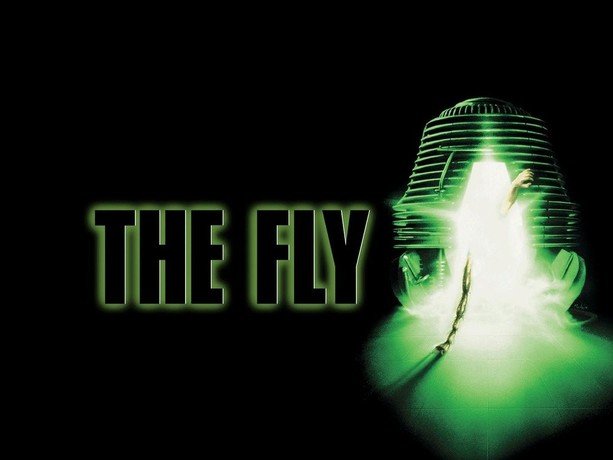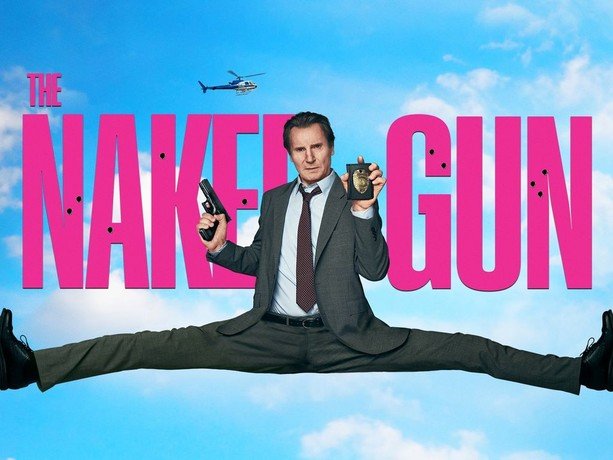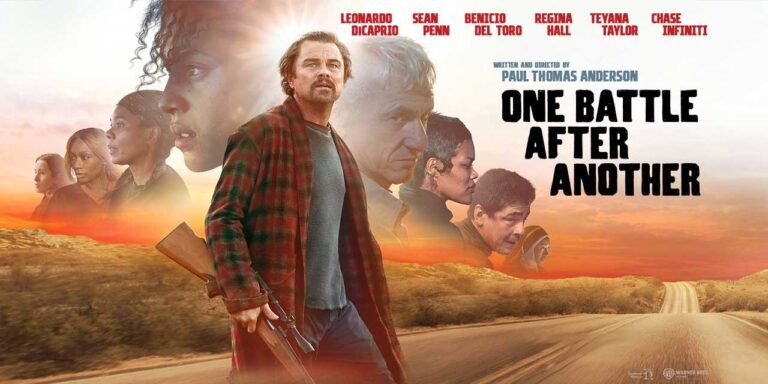
Among the great science fiction films, particularly those that blend the genre with horror, it’s difficult to find a legacy as lasting and impactful as that of “The Fly.” But it’s not just the 1980s version that holds this powerful presence in science fiction – the original 1958 film also has a significant and important place in the genre. Together, these two films are considered some of the most influential works in Hollywood, known for being titans of body horror.
However, there is much more to the story of the scientist who turns into a fly than meets the eye. Especially in the 1986 version by David Cronenberg, which despite being superficially labeled as a grotesque, disgusting, and frightening film, is actually a profound tragedy – a film that challenges its genres and labels, using all of its qualities to show us an allegory about our deepest fears, a universal terror that affects us all. This film is a work of art that transcends its decade and remains one of the most relevant artistic and visual expressions within science fiction.
The Fly’s Tragic Origins
The story of the scientist who invents a teleportation device and the consequences that follow first appeared in the June 1957 issue of Playboy, written by the French author George Langelaan. The short story was a huge success and popular enough to be included in the 1958 edition of the “Best Science Fiction and Fantasy Stories of the Year” anthology, and of course, quickly adapted into a film less than a year after its release.
The original story is practically the same as what we see in the first film, even with a similar structure told as an investigation and confession of a crime. But the ending is much less optimistic – practically everything happens as in the 1958 film, but the story ends with Helene committing suicide after recounting the story of her husband’s metamorphosis. The story also brings a great ambiguity about whether the characters have or have not believed the story, but the 1950s, especially in cinema, was not known for having such depressing endings.
The Fly (1958): A Timeless Classic
This leads us directly to the first time “The Fly” made it to the cinema, which, although it may not have aged as well today, is still an incredible and very important film for the genre. Starring the incomparable Vincent Price, “The Fly” tells the story of the dedicated scientist André Delambre, who invents a form of teleportation capable of atomizing something and then reorganizing the molecules in its original form in another environment. In his quest to improve science and reach new horizons, André ends up testing the machine on himself, with disastrous consequences.
The 1958 “The Fly” is a great example of simplicity executed to perfection. The story structure is similar to a mystery film, where we already know that he will not be able to save his wife with a press, but we gradually discover what led the situation to that point. The shock is in discovering the truth, not the transformation itself, since the technology of the time did not allow the full exploration of body horror. But don’t be fooled – the film is a great proponent of this style of terror, as the simple idea of having one’s head and arm replaced by a fly was already terrifying enough, and I think it still is today.
The Fly is a great example of perfect execution, with some brilliant moments that bring a lot of humanity to the creature’s story, creating a lot of sympathy for the tragedy experienced by the couple. This is an interesting point that is often overlooked – it is a film about a family tragedy before it is a film of terror or science fiction, which I think helps even more with its longevity and impact. And of course, we also have the ending, one of the most recognized and terrifying in science fiction.
Ultimately, “The Fly” is a film about the risks of science itself. It tells us that the pursuit of knowledge must have some kind of limit, and that there are mysteries we should not try to unravel – a simple message that, for its time, was not yet so unanimous, but helps to give more layers to a film that is so important visually, but with a foundation as solid as this.
The Fly (1986): A Masterful Reimagining
But could a remake ever hope to measure up to the original film? The answer is a resounding yes – in fact, the 1986 remake was able to deliver a truly unique experience for audiences. If “The Fly” (1958) is a film that seeks perfection in its simplicity, “The Fly” by Cronenberg seeks perfection in its complexity.
Released almost 30 years after the original, the new version takes advantage of all the technological advancements built up over the decades, particularly in the field of makeup, which gained a lot of strength in the 1970s, as well as practical effects like those seen in “The Thing.” But Cronenberg, known for his work in body horror and the grotesque, as well as for giving an intellectual tone to many horror stories, accepted the project with a condition: he wanted the freedom to write the script as he saw fit.
Inspired by Franz Kafka’s “The Metamorphosis,” Cronenberg wanted to use the scientist’s transformation, this time named Seth Brundle and portrayed by the incomparable Jeff Goldblum, as an allegory for our own changes, the deterioration of our body, and even our mind, while also showing the deterioration of our personal life. Unlike the previous versions, the story is no longer about a family tragedy, but a romantic tragedy, as Seth falls in love with Veronica, the reporter who was following his scientific advances.
The Fly’s Deeper Themes
But “The Fly” goes much deeper than just this analogy. Cronenberg compared Seth’s transformation to being addicted to different substances, specifically cocaine, which was a major concern in the 1980s. Seth is in denial about his “addiction,” focused only on the benefits and denying the truth that this path will lead him to tragedy. Anyone who has lived through a similar situation can probably identify with the terror of seeing someone you love destroy themselves little by little, especially when they are in denial that it is happening.
A popular comparison to “The Fly” is the HIV epidemic that was terrifying the world at the time – a disease that gradually debilitated its victims and took the lives of many prematurely. A fear that, according to this interpretation, is graphically exemplified in Seth’s transformation, which gradually sees his once-athletic body lose its form.
However, Cronenberg himself said that while he understands why people see the HIV allegory in his film, for him, “The Fly” is about something much more universal – aging and death, something we all have to deal with. The journey of Seth Brundle from a shy scientist to a confident, athletic man, and finally his transformation into a giant fly, is a parallel to something no one can escape: our own transformation, the fragility of our body against the greatest of forces, time itself.
There is a great emphasis on the characters talking about time and aging at different points in the film, often with a very positive view. But Seth’s transformation explores the more negative side of this process, exploring the fear many have of the passage of time. The beginning of the transformation, with its positive effects, represents our best moment, when we feel stronger, more agile, unstoppable, including our libido. We have that moment of euphoria, of strength, of power. But it is precisely when we are at our peak, in the midst of the euphoria of youth, that we one day look in the mirror and wonder – and that’s when we notice changes that often displease us.
It’s no coincidence that part of Seth’s transformation focuses on hair and tooth loss, common fears related to aging. Cronenberg’s metamorphosis involves the constant anguish that everything passes too quickly, especially our health and our physical youth. An extreme visualization of the feeling that we are no longer what we were yesterday, that we are no longer as strong, as resistant, as young. The film even explores the fear of diseases like Alzheimer’s, as we see the scientist’s cognitive loss as he becomes more and more fly-like, which ends up alienating him from the people, especially the one he loves most.
“The Fly” is a drama above all, a romantic tragedy capable of rivaling the great tragedies of Victorian times. It’s common that this kind of film would never be made, which is why the science fiction “costume” was used to hide such a delicate subject that affects the viewer so much. This is something that has always been common in the genre – hiding serious themes in its visual spectacles.
Yes, it is a pessimistic and negative view of a natural process, but it is undoubtedly a way of thinking that has already crossed the minds of many, and here it is explored in a visceral, visual, and very impactful way. It is the direct representation of one of our greatest and most intimate horrors – the notion we have of the fragility of our body and even our mind as time passes. The tragedy of “The Fly” is the personification of our feeling that our best is already behind us, that from now on it is only the end of the rest of our lives.
The Enduring Legacy of “The Fly”
25 years after the release of the 1986 film, Cronenberg returned to make a commentary for the special DVD edition. Now older, he said that he identifies with many of the issues he raised in the ’86 film, and that it is still the only one of his films that still impacts him. But at the same time, he is still behind the camera and in front of it, even having a major role in one of the most famous science fiction franchises, a franchise he grew up watching.
So “The Fly” is not necessarily about the aging process, but about the fear we have of that process. Because the truth is, as scary and perhaps even a visual spectacle as exploring these fears the way “The Fly” did, we don’t need to be afraid of old age. In fact, the important thing is to not waste your best moment now.
The 1986 version of “The Fly” is nothing less than a true masterpiece, and at the same time one of the most competent films in practically all of its aspects. The production was careful to find the perfect actors for each role, including Jeff Goldblum’s romantic partner, whose excellent chemistry with him is undeniable. But the true star is really Goldblum, who managed to deliver both the mannerisms of an eccentric scientist and the physicality the role demanded.
We can’t fail to mention how well he manages to act literally covered in a rubber suit, with subtle eye and head movements delivering the transformation of the man into the creature as much as the incredible makeup by Chris Walas, who deservedly won an Oscar for the film. Few films can achieve such an incredible level of transformation, and the soundtrack is undoubtedly a unique experience for any fan of this type of art, so incredible that it can turn a simple walk to a bar into one of the most dramatic and powerful scenes in cinema.
“The Fly” had everything aligned to be a timeless classic – its themes, Cronenberg’s passion for telling this drama, the practical effects technology, Walas’ incredible makeup, the impactful soundtrack, and perfect casting for each role. All combined to create one of the most incredible films ever made, capable of being funny, scary, and a great piece of science fiction, as well as one of the most moving tragedies within the genre. This story is truly unmissable.




I have been browsing online more than 3 hours today, yet I never found any interesting article like yours. It’s pretty worth enough for me. Personally, if all site owners and bloggers made good content as you did, the net will be much more useful than ever before.